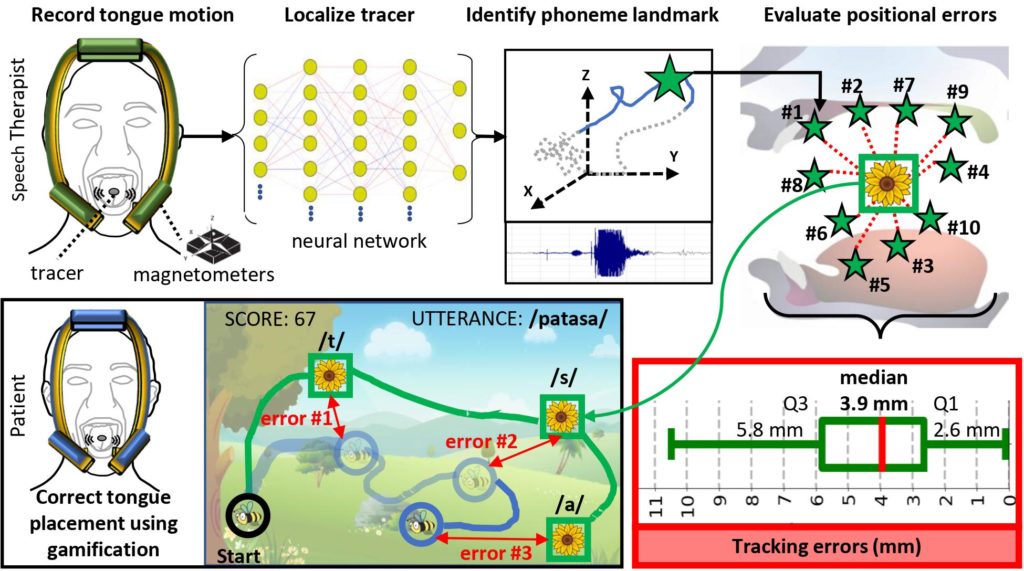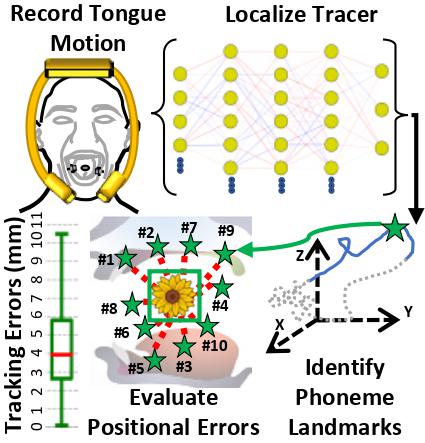
Tracking the movement of the tongue is a challenging task because the tracking must be unobtrusive to not impede natural speech, work in a wet environment, while being accurate with positional errors at the millimeter scale. Many existing and new applications can benefit from having access to a real-time visualization of tongue movement, and this work focuses on improving the outcome of speech therapy for people affected by a speech sound disorder. The final objective is to help these patients correct the positioning of their tongue to improve their intelligibility when producing the phonemes affected by their speech disorder. To this aim, our team has developed a 3D tracking system specifically designed for tongue tracking by using a magnetic localization method that is wireless and unaffected by a wet environment. Since the tracking accuracy of this system was previously evaluated in a lab testbench, this work focuses on its evaluation outside of a controlled lab environment by recording 2,500 tongue trajectories from 10 subjects tasked to utter 25 phonemes with 10 repetitions. The key landmark positions for each repetition of each phoneme were first identified by a custom-designed algorithm and then reviewed by a speech language pathologist. The tracking accuracy was estimated from the positional errors between these phoneme landmarks and showed that our system is capable of tracking tongue motion with errors in the order of few millimeters (median: 3.9 mm, Q3: 5.8 mm). These results are promising, and we have identified areas of improvement to make our system more accurate and more practical to soon be used by patients, their speech language pathologists, and the wider scientific community working in the field of speech science to better understand speech processes from articulatory motion.

